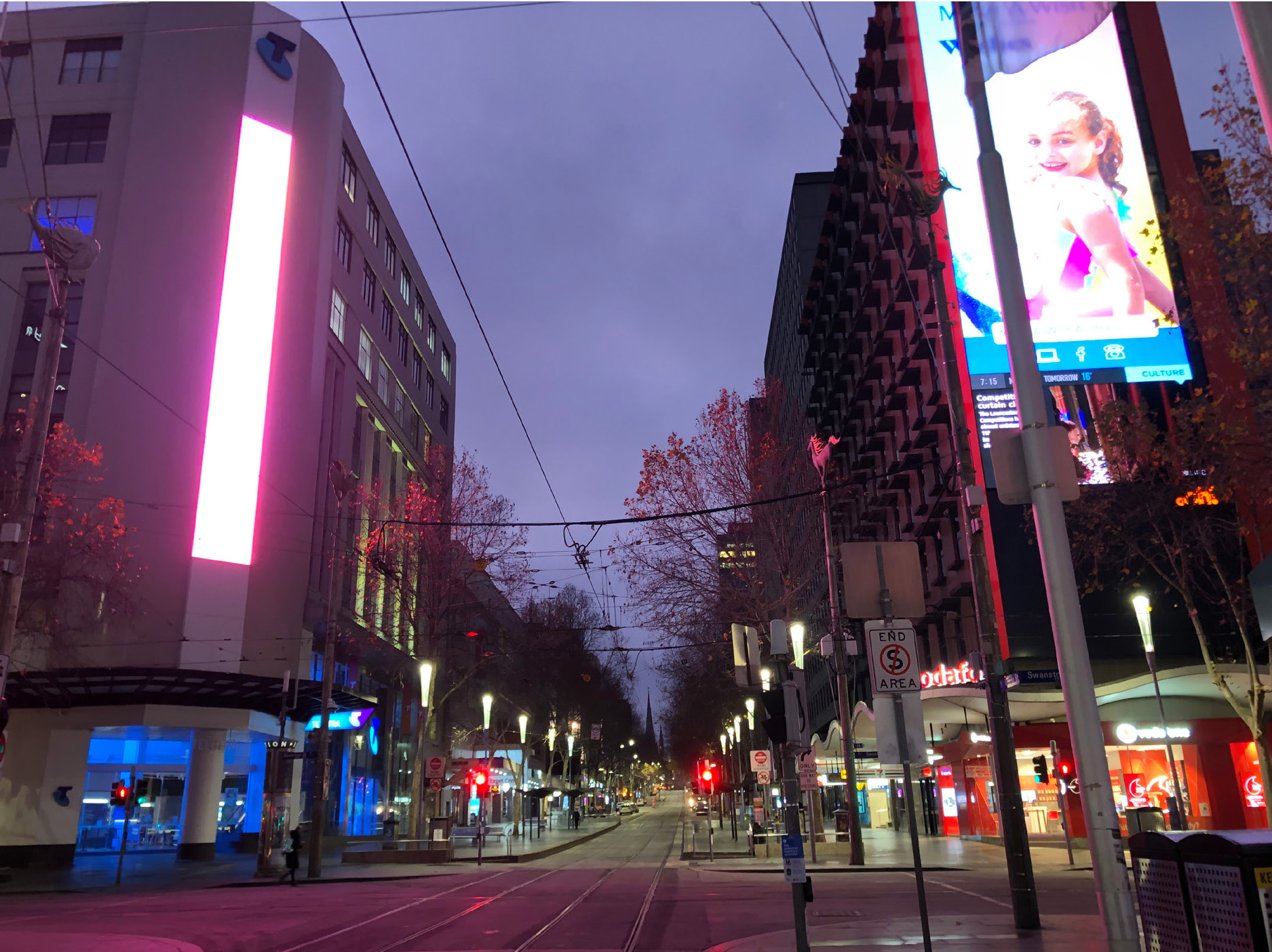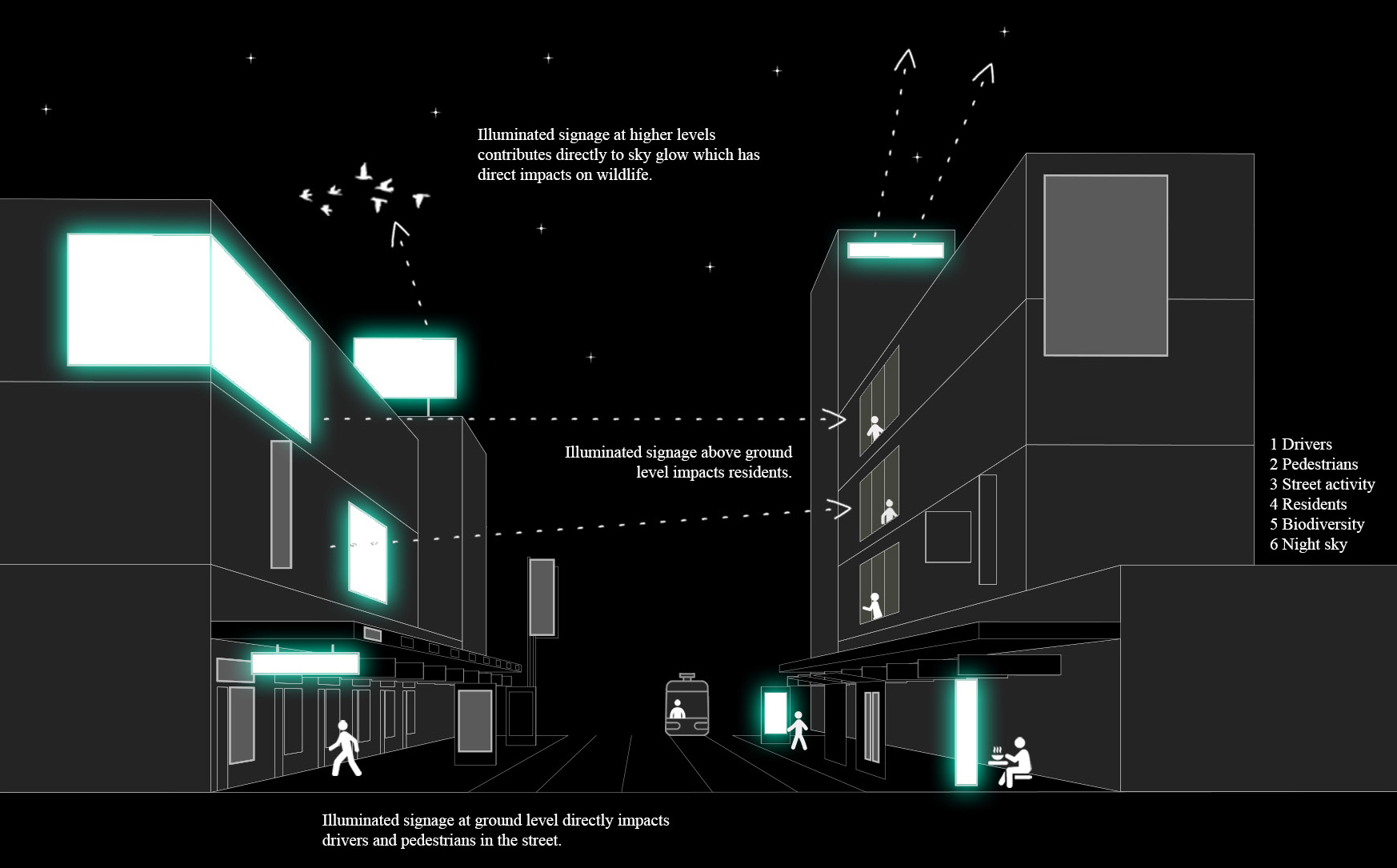Melbourne Signage Policy
- Location Naarm / Melbourne, Victoria
- Client City of Melbourne
-
Team
A Billion Suns
Sarah Collie -
Service
Strategy & Policy
Urban Research

The Challenge
Signage is an integral part of any city. Well-designed signage creates places that are more legible, navigable and engaging. By contrast, poorly-designed signage can have detrimental impacts that undermine the experience of the city.
A saturation of signage in a given location can result in a visually cluttered environment, diminishing way-finding benefits as signs compete for the public’s attention. Signs that are over-sized, garish or poorly placed can compromise valued heritage or architectural character of a place.
More recent innovations and global trends in digital signage design present exciting new ways to animate the city, however, also bring new challenges that need to be carefully managed such as the impacts of light pollution and the potential for aspects of the city’s valued character to be overwhelmed by digital advertising.

Our Approach
Extensive research and analysis was undertaken across a range of influencing factors that inform a contemporary signage policy, including way-finding, tourism, health, technology, heritage, environmental sustainability, culture, biodiversity and street character.
The policy focuses on setting clear principles for the future city that we wish to create, as well as mitigating negative impacts of signage, particularly around light pollution and poor urban character.
The evidence-led approach has informed a progressive signage policy that includes recommendations to turn off digital billboards overnight (when no one is looking at them) and to better manage the impact of signage on valued urban character through better design guidance.

Impact
The work has resulted in a contemporary signage policy that is globally leading, drawing on the best evidence and research available, and which seeks to enhance the city’s identity and reputation as a characterful and liveable city.
It will have a significant impact on reducing light pollution which will lead to biodiversity improvements and a more sustainable city.